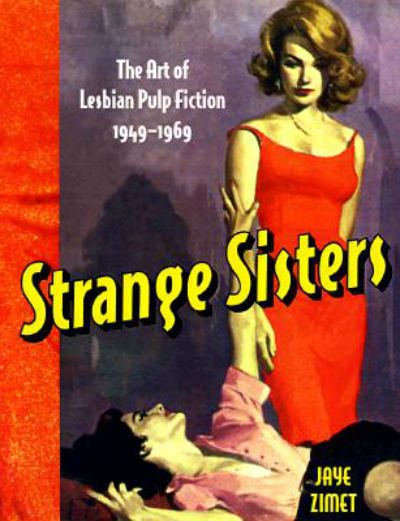Lesbian cover art…The weird and wonderful world.
When discussing the history of Lesbian Pulp Fiction, its cover art is as famous, possibly more so, than the content of the novels. The pin-up or glamour girl was a staple of American culture from the 1930’s-70’s and could be seen almost everything from postcards to calendars to drinks commercials. These images were eagerly consumed by a mass market and were celebrated in society.
They were seen as wholesome and for all the family, despite the risqué nature of some of the images. It seemed natural then that some pin-up artists landed jobs illustrating pulp magazines. However, the pulp’s were meant for a much more adult audience and the cover art, coupled with its descriptive sub-titles, portrayed a world of vice and sleaze.
‘Strange Sisters: The Art of Lesbian Pulp Fiction’ by Jaye Zimet is a fabulous collection of pulp art from 1949-1969. It includes two hundred images from the genre which range from the hilarious to the downright bizarre. Women in prison, women in sororities, women at war, even women masquerading as the devil. These covers often strayed from the original content of the novels, but their main goal was to hook the reader.
These images were used to sell books and the cover art promised excitement, outrage and of course, lesbian sex. The covers were usually coupled with sub-titles that played the dual role of heightening the expectations of the excitement that lay within the text, but also provided a moral warning to the readers. An example of this is on the cover of ‘Strange Delights’ where the cover proclaims ‘The Tragedy Of A Sex Doomed To Take Their Delights In Strange And Unnatural Ways’.
My feeling throughout reading this retrospective on pulp cover art was that I wondered what the women who read these books at the time thought. Although primarily used as a tool to sell these books in mass production, the covers also gave lesbian and bisexual women the knowledge that these books would contain characters who felt same sex attraction.
In a world where there was scant representation of same sex desire, these books offered some comfort, however minimal, to a community persecuted by society. It is often said that these books created communities themselves as readers went in search of the lives they had read about.
However, I also thought about the psychological effects of seeing yourself, and others like you, depicted in this manner. These covers painted lesbian women as mentally ill, depraved and dangerous, and I wonder at how this would have affected lesbians and bisexual women struggling with their own identity. These covers reflected societies intolerance of lesbianism, no matter how titillating, and this cannot have been escaped by readers who read them for solace and identity.
What Zimet does with this collection is present the reader with the fabulous and bizarre world of Lesbian Pulp Fiction cover art. To the modern reader, at first glance, they may seem dated and over the top. But this collection, and others like it, should be celebrated as an enormous part of our history and community.
